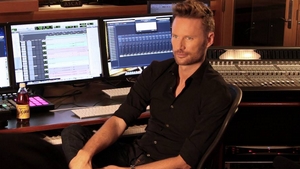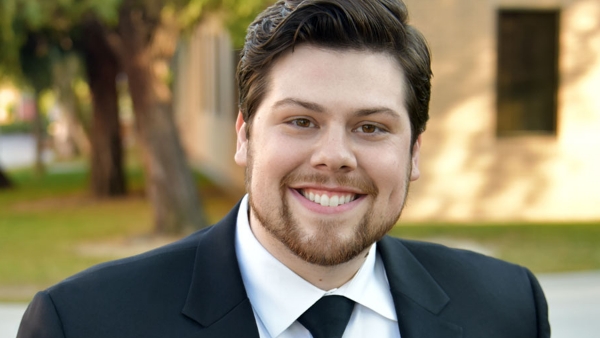
From director Matt Schrader and producer Kenny Holmes comes Blockbuster, a six-part, 2.5-hour immersive audio series that traces the young friendship of Steven Spielberg and George Lucas — before Jaws and Star Wars — and before anyone knew their names. It’s a story that took place a half century ago — authentically recreated in striking detail by leading voice actors, award-winning sound designers, and with a sweeping original score. Also, this series features the most advanced sound design ever created for a podcast.
Over the course of six months, the Epicleff team utilized prominent, award-winning voice actors from the animation and video game industries, captivating three-dimensional sound design from Motion Picture Sound Editors-nominated designer Peter Bawiec, and a theme-driven original score that develops as the story progresses from award-winning composers Ryan Taubert and Benjamin Botkin.
We got to know Matt Schrader when we spoke with him as his team was in the middle of shooting SCORE: A Film Music Documentary. This podcast is both engaging and expertly paced. It’s also so well constructed that it could work as a live-action biopic. All the ingredients are there – screenplay, actors, sound effects – the only thing missing are the cameras. Here’s hoping this is a baby step toward a feature film.
Enjoy this glimpse into the creative process and the elements that make Blockbuster so extraordinary.
GoSeeTalk: Going from a documentary about film music to your composer interview series to Blockbuster is an impressive creative path. How did you and Kenny Holmes work up to this, and what made you want to tackle this period in film history?
Matt Schrader: The start of this goes back to SCORE, because we did a fair amount of research on John Williams and the start of the modern era of film scoring. What was really interesting is that there are these really amazing and personal stories happening at the same time that these huge breakthroughs in entertainment and technology were happening. The people that are involved in those breakthroughs were only are in their early 20s and 30s, and they are the ones who are shattering expectations. The result was a new reality that comes about as a result of this: The Summer blockbuster film.
When you look back, there’s not that many revolutions that happen in any industry. Every couple of decades something big happens to change the landscape, but this story comes at a time when Hollywood was steadily declining, television was taking over, and this was thought to be the end of movie theaters. It’s very much what we’re hearing now with Netflix consuming so much of the in-home market.
The interesting thing that happened during this period is that the rules changed and, all of a sudden, the theater was more popular than ever. The cinema became a new place to go experience something and really it was just a slightly different type of something. What Spielberg and Lucas created was this kind of massive, mainstream escapism. That was something people didn’t think there would be an audience for. It seemed kind of ridiculous and outlandish. Brian De Palma called a Star Wars “a kids movie,” but there’s passion in there, and there’s something very powerful about this mythological that has some depth to it. Even if it seems like a comic book, there’s a lot that people relate to.
Spielberg and Lucas kind of stumble onto success. They make a mess out of their first blockbusters and are both kind of rescued by their mutual friend, John Williams. But audiences flocked to it and it just so happened to become a new model for entertainment. And I thought that was a truly fascinating story, especially that period in the 1970s.
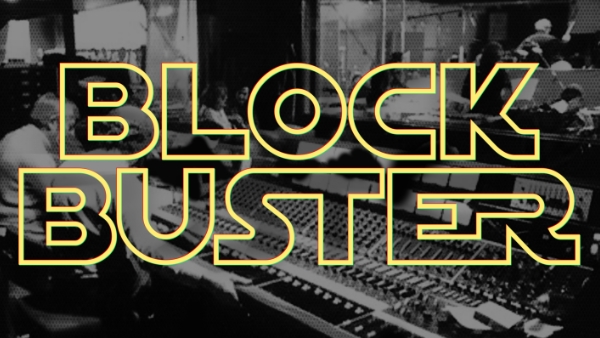
Audiences had escapism going back to Captain Blood, King Kong, any number of Hitchcock pictures. But when television came around, content became more accessible, and it kind of became mundane – cop dramas and cowboy stories – right? People were really looking for something they didn’t know they wanted.
Yeah, in the ’60s, the networks put out their own product that start to be hits. But in the ‘70s there’s this huge explosion, and there’s a television show for everybody with almost every type of content. So why would you go to the movies when you could watch five or six of your favorite shows every week… and it’s free? There’s a lot of parallels to the modern era.
When you developed SCORE, you spoke to several industry professional in addition to the impressive line-up of composers. Who were your go-to subjects for Blockbuster, and what went into your research?
I come from a journalism background, so I’m comfortable in the deep dive research side of things and pulling information that can contribute to a broader understanding of what’s going on. We discussed the idea of doing a documentary, but I wasn’t sure this was the right approach, mainly because that, in some form, has been done before. What’s brand new here is this friendship and relationship between Spielberg and Lucas and how they support each other and are competitive with each other in this era. It really inspires them to keep going.
That’s a story that’d never been told. In the hundreds of archival interviews, books and other research documents that we sifted through for this, that’s a storyline that not been shared, but it’s one that any struggling artist relates to. It’s really interesting to me to see how these people who became the most influential people in the last four decades were just kids tying to aim for an achieve their dreams. That’s really powerful on a personal level aside from the fact that their work revolutionized the entire film business.
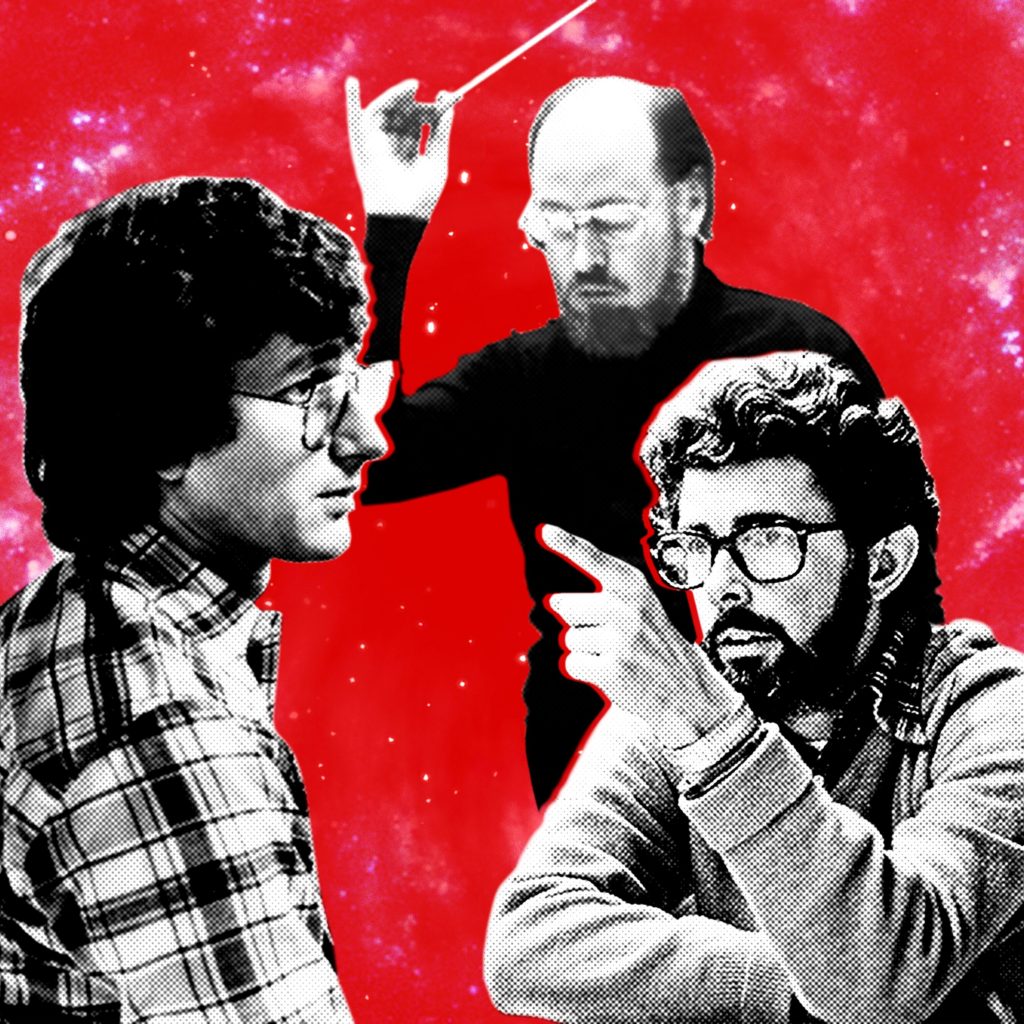
As a producer, you’re assembling new and pre-existing material into your product. To the listener, a podcast might not seem that difficult to pull off. But break it down for us. Do you have to know every single move before you something, or can you wing it?
Putting this together is like doing a jigsaw puzzle with a million pieces. [Laughs] Every piece relates to each other, but you don’t really know where each piece is supposed to end up. Short answer is that it’s harder than it sounds. [Laughs] When we started this, we didn’t know how many layers there would be to the research, the coordination, and the accuracy – journalistically and creatively – of all the elements that we’ve compiled over the entire series. It’s difficult to say without heavy creative feedback from legal consul whether we can or can’t do things in the storytelling, and it required careful navigation that to be able to bring all those elements together in a way that told a powerful story all the while referencing archival materials, books, documentaries, featurettes and interviews they had done. It’s part of what took so long to pull this all together; it’s a story, not just a set of facts.
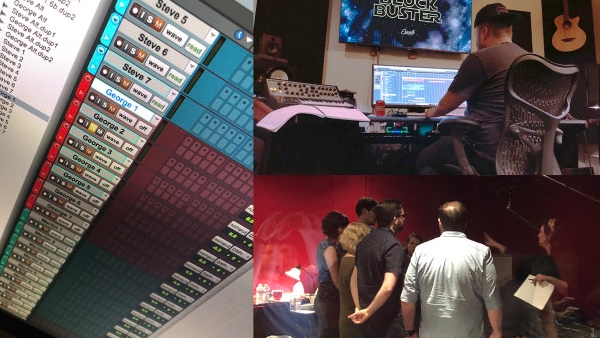
What kind of technical hurdles did you face on Blockbuster, and what went into the sound design and effects?
We put this together like we would a feature film. After all the research, we had a first draft which we used to move forward, and we had about six months of really intense recording, sound design, and score composition. Because of the platform, there were certain unique challenges. We can’t recreate visually anything that takes place in a diner or Francis Ford Coppola’s living room, but we know that it happened and so there’s a lot of interweaving that were doing with music, and sound, and dialog to bring people into a scene.
One unique thing we’re doing, starting in Episode II, is give a three-dimensional sound design that is immersive; it is created the same way you would in a studio film. The layers are there, and we had 180 tracks on some of the scenes, and that’s just the sound design, the music is on top of that. These are all doing things that are constantly moving to give you the feeling of being in a certain place at a certain time.
That creative effort has never been done for a podcast. There are great narrative podcasts out there, but they’re more stripped down. There’s a great one out there called Blackout, which has Rami Malik, and the sound design is incredible, but they took a very different approach. What we wanted to do is make everything as immersive and intuitive as possible, so we could follow the story itself and use the sound and music and draw people into the experience.
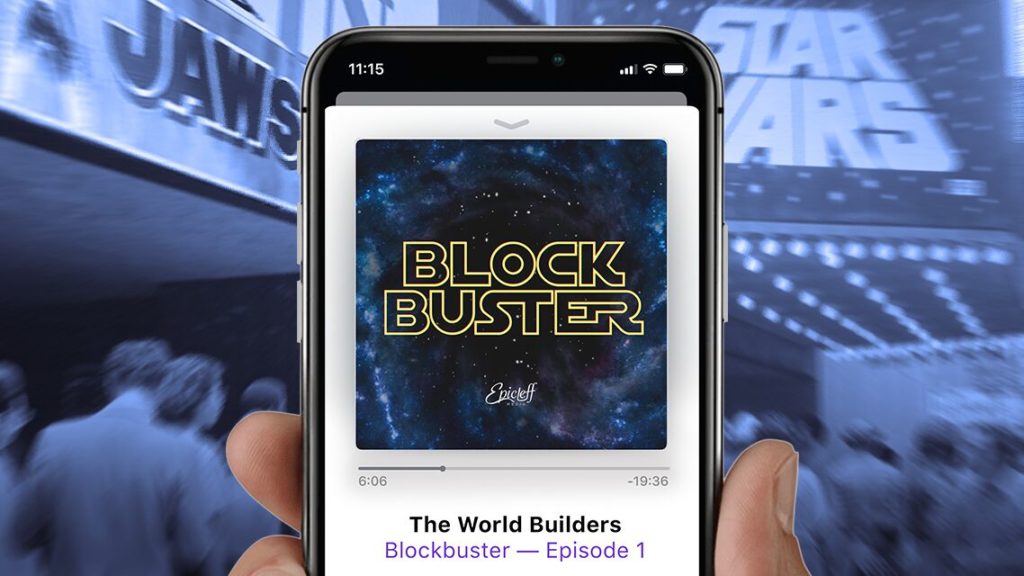
Is the six episode format a sly nod or reference to the first six Star Wars films?
[Laughs] No, but I guess you could view it that way. What we did is take the standard three act structure in a feature film and divided it into six miniature portions that have their own arc within them. This was another challenging thing for us because you must make each episode work as a standalone piece – give it a beginning, middle and end – but one that relates to the next episode.
That structure is difficult to bring into what we were doing, but our goal was to create an overall experience fist and then try to develop, on a smaller scale, what each episode does so that we layout the characters motivations at the start, then depict their trouble and then reach some resolution or cliffhanger at the end. It was a difficult thing to get, but when it works, it really starts to flow.
What was the most surprising thing you learned or experienced in the production or about either Spielberg, Lucas, or Williams?
When this was just a core idea, the first person I reached out to was Peter Bawiec, who later became our main sound designer and editor. From the start, I wanted to trace this time period, and I asked him if we could do something groundbreaking. He was optimistic even though this project lent itself to things that had never been done before. The interesting ways we started to bring in sound was by using archival footage, and we blended that with our voice actors and effects.
In the third episode, we tell about the time when John wins an Oscar for Jaws. It’s an exciting time for him. Our voice actor is repeating John’s acceptance speech, but the sound in the background is from the award ceremony telecast from that year, and the foreground is our sound design that we layered over that to really make it feel part of something authentic. That was an interesting discovery in that we didn’t need to recreate everything to achieve what we needed to tell our story. To let listeners know it was the ‘70s, we could blend actual journalism and existing elements of the era to give the feeling. There are a few Easter Eggs that we’ll highlight as some point, but there’s a lot of layers.
On the research side, everything about Williams is fascinating to me. There’s been very little ever discussed about his past which is surprising given that he is the most accomplished musician in Hollywood history, and has had more Oscar nominations than anyone else aside from Walt Disney. That’s amazing that we don’t know more about his amazing story and what led him to him becoming the most prolific composer of our time. That really stands out and adds to his individual story and how he plugs into this enormous revolution taking place in cinema.
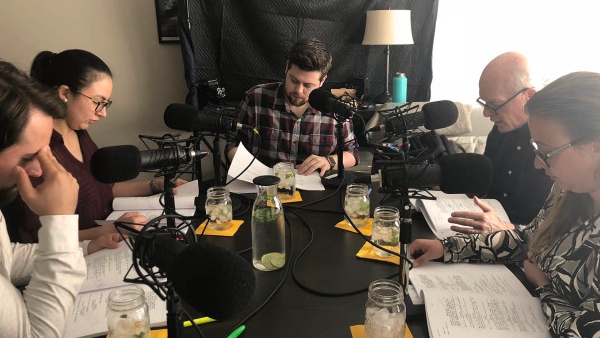
How can fans get involved, and what goes into a crowd-funded effort like this?
It’s a very interesting model, and what we’re doing with this series, if I can be so bold, is pioneering the podcast platform. What we did with Blockbuster is that we opted not to partner with a network. The reason for that is ads. We felt like the experience of listening to seven minutes, and then a minute-and-a-half of story, and then another seven minutes, and so on feels a little bit outdated. Further, and as a listener, I don’t really enjoy that experience very much. Now the risk of releasing something ad free is that you might not make any money. Period.
Now this was a very complicated and expensive production that we are in debt from right now and hoping to earn that back. But the way we are trying to do that is by offering additional content, the soundtrack, artwork and collectible things for people who are really into the story and passionate about it. And I think if people realize that you can have the experience of an 2-1/2 hour film through this podcast over the six episodes, then it seems reasonable for us to ask if they can support it. And if they can, we want to include everyone’s names as ‘thank yous’ in a similar way we did with SCORE. But in this case, it’s after the product is pretty much done.
This is the first scripted series that has been released this way. We’re making it free and offering the best and most immersive experience it can be when it first plays so you can have a good time experiencing it. I think that’s something that if people enjoy it, then they’ll be willing to help support us.
Thanks to Matt for his time. Give the series a listen on the official page at www.getblockbuster.com and please contribute to their efforts on the IndieGoGo website. There you can donate to the production and claim any number of perks.
We’re now listed as “Consultant” on their credits page and so glad to be following along with this one-of-a-kind experience.


